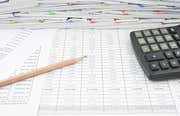In most areas of human enterprise and endeavor, there's a big picture and a little picture – the macro and the micro. The macro looks at things through a wide-angle lens; the micro uses a narrow-focus lens. This is also true in economics and its two branches – macroeconomics and microeconomics.
In general, economics studies how individuals, businesses, governments and nations make choices on allocating resources to satisfy their wants and needs. Macroeconomics studies the large-scale phenomena in the national and global economies. These include central bank interest rates, national employment numbers, gross national product figures, trade deficits or surpluses, foreign currency exchange rates, and other major economic activity and data. (See also: Macroeconomics.)
By contrast, microeconomics studies a limited, smaller area of economics, including the actions of individual consumers and businesses, and the processes they use to make economic decisions – buying, selling, the prices businesses charge for their goods and services and how many of these goods and services they produce and offer.
For example, microeconomic study reveals how start-up businesses determine the competitively successful or unsuccessful pricing of their goods and services based on consumer needs and choices, market competition and other financial and economic formulas. Microeconomics also studies supply-demand ratios and its effect on consumer spending and business decision-making.
At the heart of consumer buying habits is the concept of utility, a classic economic idea that refers to the total satisfaction received from consuming a good or service. Because a consumer's feeling of satisfaction may be impossible to precisely quantify in actual numbers, the concept may seem impractical. But a reasonably close approximation is useful to businesses, and may also be useful to the individual consumer who can probably measure that feeling of satisfaction with a "gut" reaction. (For more, see: What is the Concept of Utility in Microeconomics?)
These concepts are explained in the following tutorial on microeconomics. The information is both practical and theoretical, and provides the reader with a big picture of small picture economics.
Microeconomics: A Brief History
-
 Insights
InsightsMacroeconomics
Find out everything you need to know about macroeconomics. -
 Insights
InsightsA Practical Look At Microeconomics
Learn how individual decision-making turns the gears of our economy. -
 Financial Advisor
Financial AdvisorMicroeconomics Vs. Macroeconomics
Economics is divided into two broad categories: micro and macro. Find out what the difference is between them and where they overlap. -
 Insights
InsightsWhat's the Economy?
The economy is the production and consumption activities that determine how scarce resources are allocated in an area. -
 Insights
InsightsEconomics Basics
Learn economics principles such as the relationship of supply and demand, elasticity, utility, and more! -
 Investing
InvestingHow Globalization Affects Developed Countries
The increase in communications technology has companies competing in a global market.



